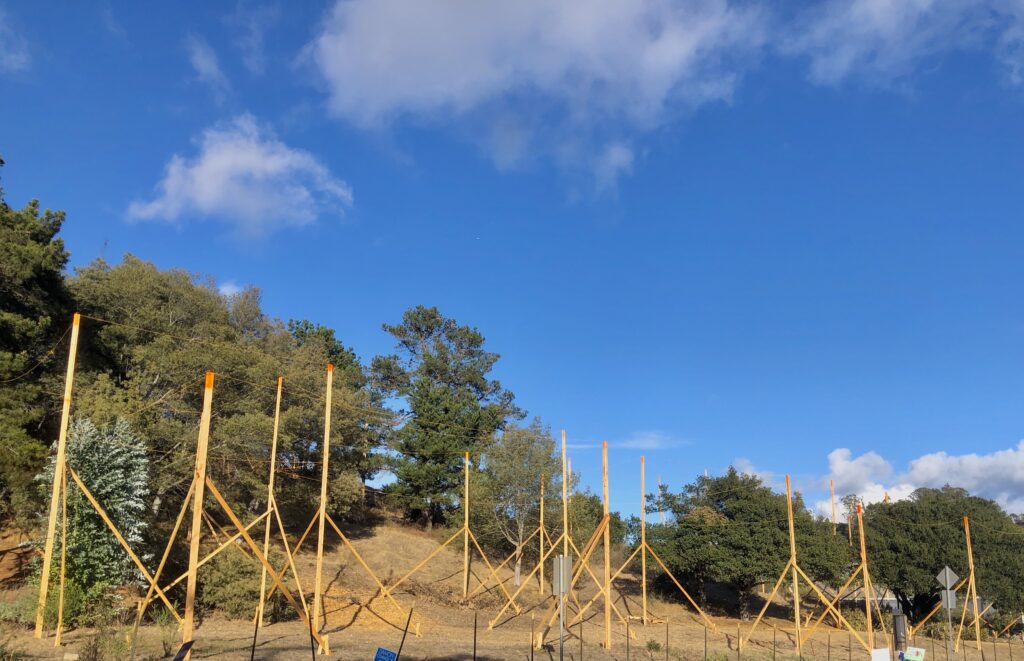
The emergence of the story poles last week for Phil Richardson’s latest attempt to build housing on his 575 Blithedale property have put the project’s size, scope, impact and possibilities front and center. Those considerations, along with the logistics of the business intersection of Camino Alto and East Blithedale Ave. itself, are the latest chapter in the longtime local builder’s enthusiastic attempt to develop a 1.2-acre property that he’s owned since 2004, facing stiff opposition ever since from neighbor groups that have packed public hearings, hired land-use attorneys and gone back and forth with him via sign wars.
Richardson is proposing a 25-unit proposal that calls for six 800-square foot affordable homes; six 800-square-foot homes designed for seniors, three 1,100-square-foot market rate homes and 10 2,100-square foot market rate homes. It also includes 2,240 square feet of ground floor commercial office space on a 1.2-acre site. Richardson proposes 12 of the housing units above the office space, including 11 two-bedroom units and 1 one-bedroom unit.
In doing so, Richardson retained award-winning architect Mark Cavagnero, a Mill Valley resident, to re-imagine the original street level design to fit in with the surrounding commercial buildings and draw elements from each of those existing buildings.
Earlier this month, city officials rescheduled a Planning Commission hearing for the developer’s Richardson Terrace to November 17 so as not to conflict with the November 8th election. The hearing will be held at 6:30pm at the Mill Valley Community Center’s Cascade Room at 180 Camino Alto. NOTE: The Community Center is not equipped with webcasting/streaming capabilities, so those wishing to speak at this hearing must attend in person or submit an e-comment. You will not be able to watch the hearing unless you are in the room. Staff will make a recording of this meeting available to the community after the meeting.
Mill Valley School District To Sign Letter of Intent to Buy Six Affordable Units Within Richardson Terrace
A unexpected narrative twist emerged Thursday when the Mill Valley School District board of trustees unanimously agreed to sign a letter of intent with Richardson’s Blithedale Terrace, LLC, to buy six below-market rate units for use as district workforce housing. The district intends to buy the six units and rent them at below market rates to teachers and staff employed in the district, according to the staff report. The agreement calls for three low-income units to be sold to the district for approximately between $264,000 and $335,000 and three moderate income units to be sold in the range of $319,000 to $405,000.
“In recognition of the fact that affordable housing is in short supply in the community and consistent with the desire of the district to attract and retain employees who would not otherwise be able to afford to live in the community, the district proposes to acquire the affordable housing units to use for workforce housing,” district officials wrote in a staff report on the matter. The letter of intent represents the first step in the acquisition process which will include negotiating an option agreement the following month and ultimately a purchase and sale agreement for the units.
California’s Changing Housing Landscape
In an additional twist that’s been building over the past six years, the legal foundation on which Richardson’s property stands has moved in a positive direction for him.
“Through boom, bust and pandemic, California’s Legislature has ended each legislative session with a blitz of new laws that aim to make housing more plentiful and affordable, according to the New York Times. Those legislative measures span from local faves like ADUs and a dismantling of single-family zoning rules to a pair of recent measures that aim to turn retail centers, office buildings and parking lots into potentially millions of future housing units — moves that caused many political observers to reconsider what is politically possible.
That shift hasn’t just happened in major cities like San Francisco and Los Angeles or even Marin’s larger cities like Novato and San Rafael. It’s come for small towns like Mill Valley, where city staff and its housing advisory committee gave the green light to a draft housing report that seeks to leverage a number of strategies to address the housing shortage in town, particularly a new Housing Element for years 2023-2031, a long-term, state-mandated process under the specter of ABAG’s Regional Housing Needs Allocation that calls for an eye-popping increase in the number of units to be planned for by the city, from 129 units in the 2014-2022 cycle to 865 units in 2023-2031.
City Hall is required to plan for, but not necessarily build, 865 units from now until 2031.
The housing shift hasn’t only been legislative. In 2020, the City of Mill Valley’s Diversity, Equity & Inclusion Task Force unveiled its full report and recommendations in the form of a 93-page, 28-recommendation, multiple ”wow”-inducing document that spanned an array of topics, including our community’s lack of affordable housing. “As in communities across the nation, housing segregation in Mill Valley has operated to establish and deepen racial disparities in wealth, education and other basic rights and opportunities,” the report stated. “Mill Valley’s soaring housing prices operate—by means of the racial wealth gap—to reinforce the exclusion of Black people and other people of color. Workers in Mill Valley’s service sector, many of them people of color, are forced to commute great distances due to the lack of affordable housing.”
Per City of Mill Valley affordable housing requirements, Richardson must provide 25% of the housing units (6 units) at below market sale prices. The Mill Valley Municipal Code requires the applicant sell three units at an affordable price to moderate-income households (up to 120% of the area median income – or AMI), and three units at an affordable price to low-income households (up to 80% of the AMI). These rates are set by the U.S. Department of Housing and Urban Development (HUD); please click here to learn more about qualifying incomes within Marin County.
When asked why he doesn’t just make the project 100 percent affordable, given the City Council’s focus on affordability with its plans to repurpose a portion of City-owned land at 1 Hamilton Drive into workforce housing in collaboration with EAH Housing, Richardson draws a distinction between his project as a private developer and those working with a nonprofit like EAH, which has multiple sources of revenue, or the San Clemente Place affordable property in Corte Madera.
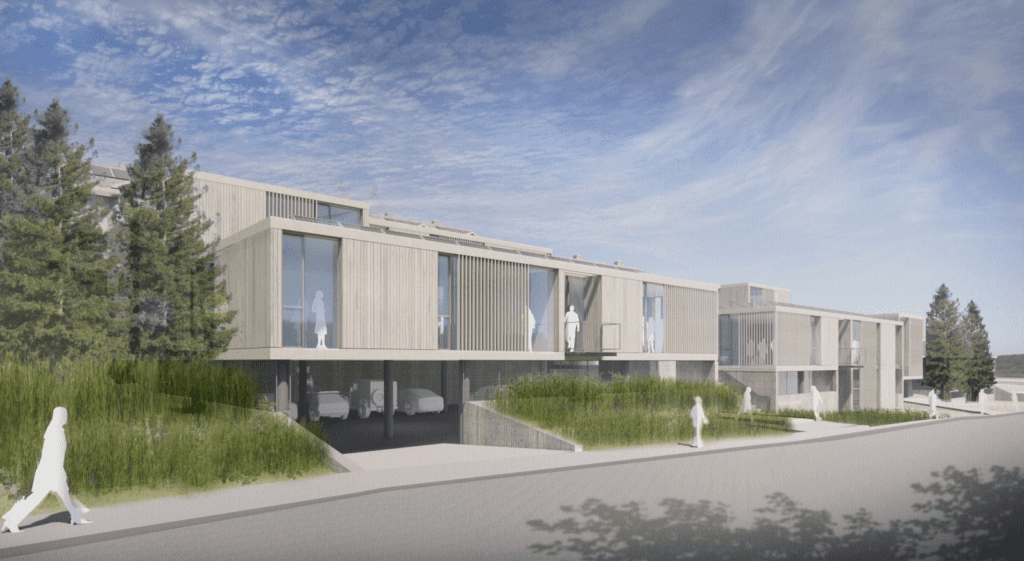
“In order to pay for those affordable units, I’ve got to build something on which I can make some money,” he says.
Richardson actually submitted the latest version of his project in 2020, but city officials had to conduct a number of studies to determine its initial feasibility. City staff and Lamphier-Gregory, the city’s environmental consultant for the project fully evaluated the environmental impacts of the proposed project pursuant to the California Environmental Quality Act (CEQA). The initial study prepared for the project provides substantial evidence that supports the conclusion that the project is categorically exempt from CEQA as an Infill Development pursuant to CEQA and that the project qualifies as a “project consistent with a Community Plan or Zoning” pursuant to CEQA guidelines.
The proposed property would feature, according to Richardson and his renowned architect Mark Cavagnero, enclosed parking and balconies for all homes; a small park with views; solar power and sophisticated home electronics included; an elevator; and incorporation as an HOA.
As Mill Valley residents know, the property is located near a number of commercial district, including the Alto Plaza shopping center on Blithedale, close proximity to the Mill Valley Middle School, Tam High and several elementary schools and the Mill Valley Community Center. The property is three blocks from the Hwy. 101 overpass.
HERE ARE THE DESIGN REVIEW PLANS FOR THE PROPOSAL.
HERE ARE THE INITIAL STUDY/CEQA EXEMPTION DOCUMENTS.
FAQs.
Here are some additional renderings of Richardson’s project, courtesy Mark Cavagnero Associates:

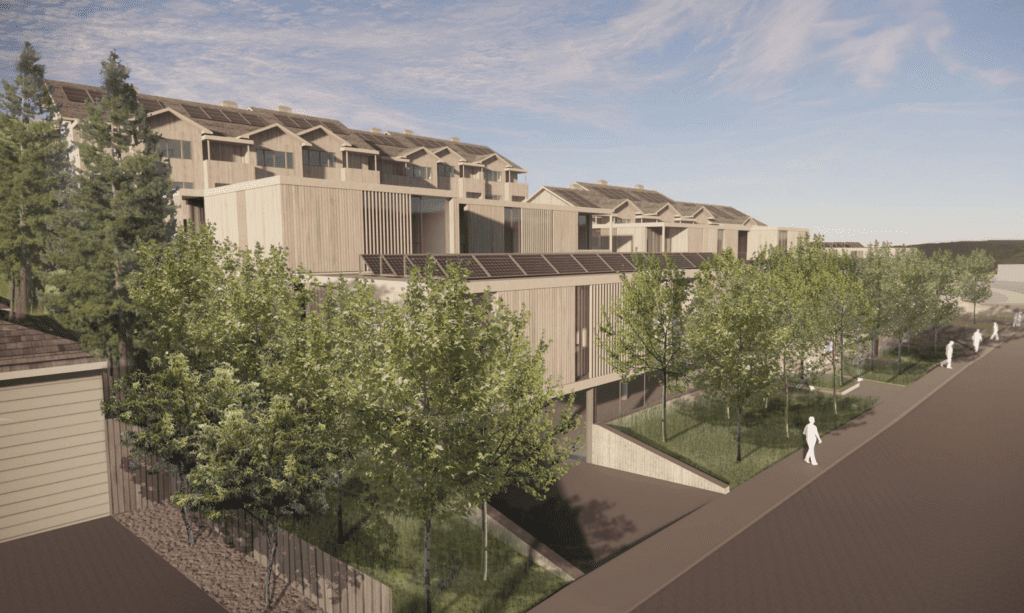

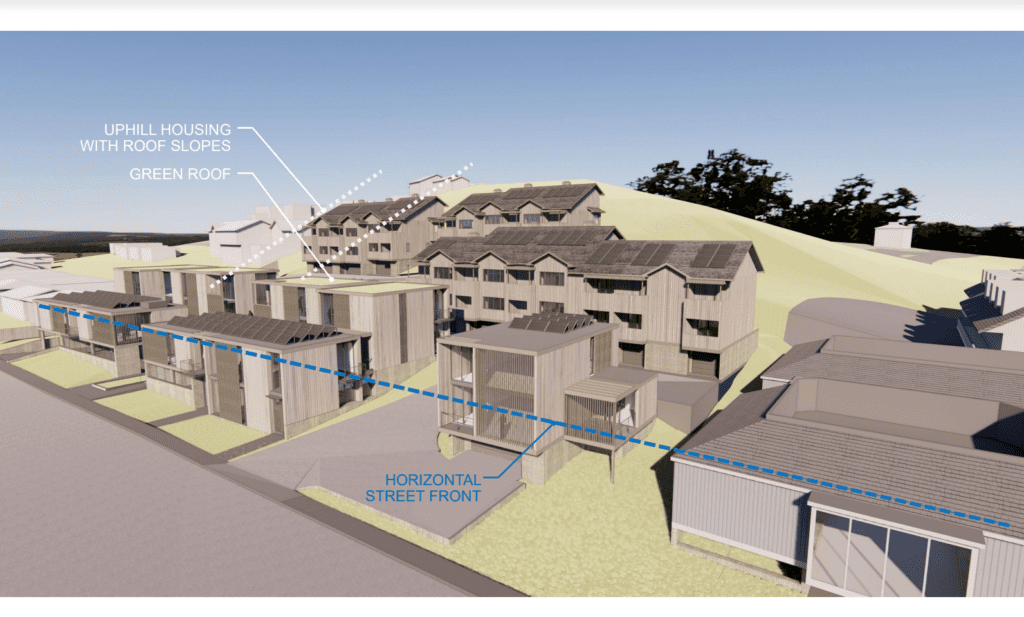

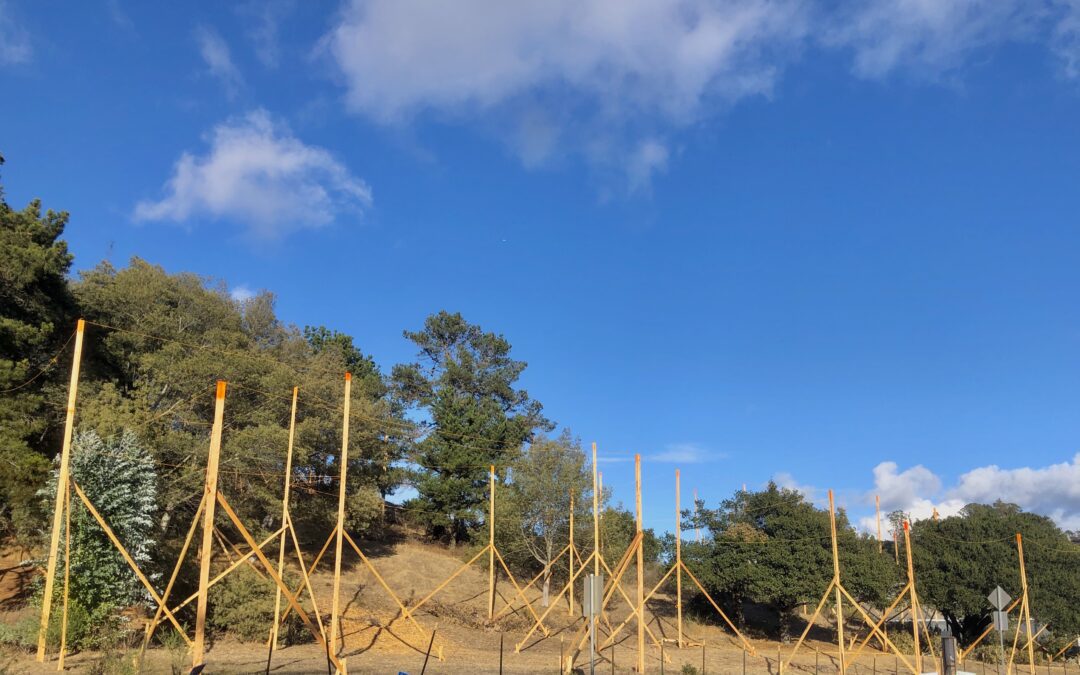
This project on this corner is a bad idea for many reasons:
– Pedestrian & cyclist safety, and unsafe crossing due to lack of visitor parking
– The project doesn’t fit the definition of infill, and absolutely requires CEQA review
– The project does not adequately address Mill Valley’s current housing element. Only 3 units are below market rate
– Fewer and smaller units provide more affordable housing
– The bulk and weight of project at the intersection is concerning and out of line with the small town character of Mill Valley
– Overflow parking on adjacent streets is concerning
– Neighbors should not bear the cost of mitigated traffic, congestion and overflow parking
Since when is $264,000 low income? Only in Marin I guess.
That’s really great for teachers and we definitely need more housing on less impacted roads. But 19 market rate homes ($2m for the 2000sf units) are not what we need on this small hillside parcel with one driveway that leads to an already congested and dangerous intersection!
Love the idea of this space being used for affordable housing but 25 units and 50+ cars is too much for this small space with major traffic and safety concerns. Love the idea of the affordable housing being used for Mill Valley teachers but would like to see more affordable housing opportunities for others at this location.